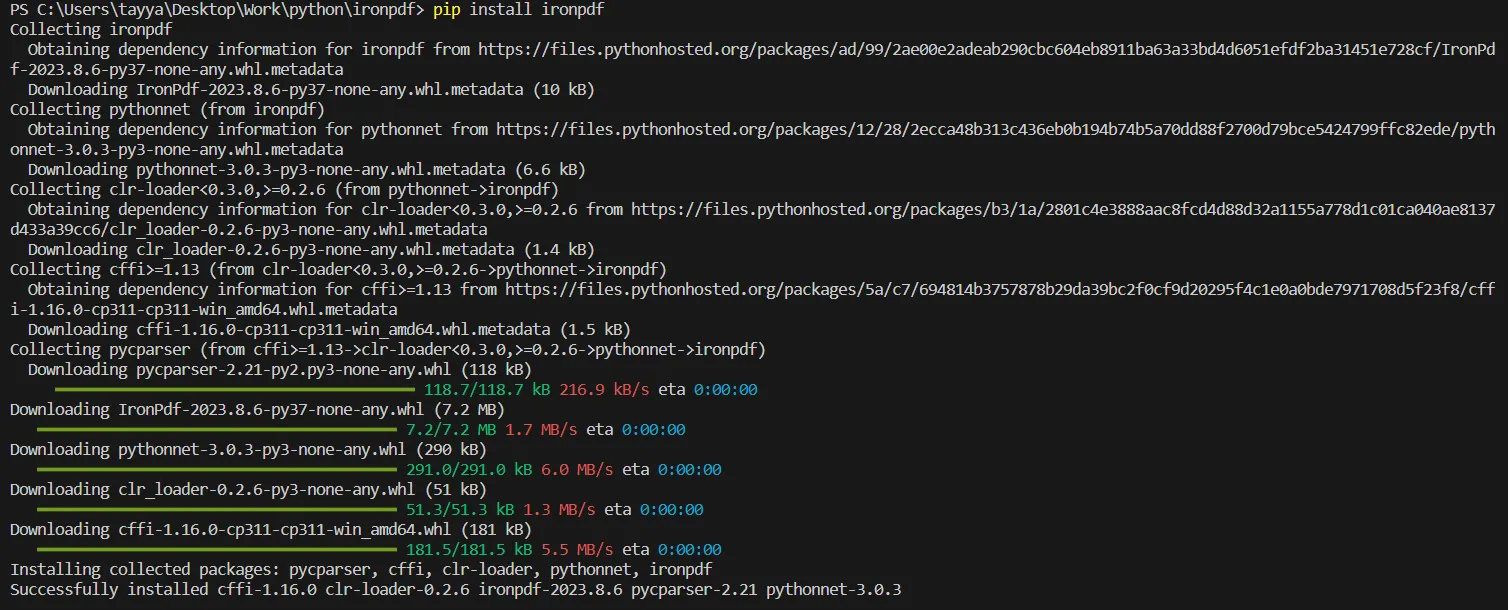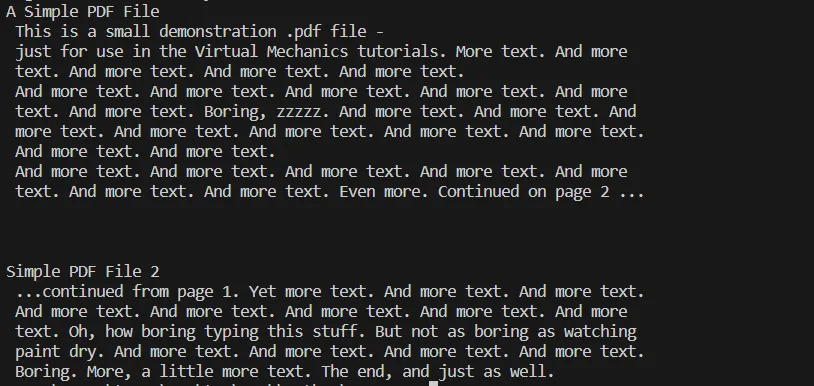Test in a live environment
Test in production without watermarks.
Works wherever you need it to.
Extracting text from PDF files, especially scanned ones, can be challenging. However, this process can be simplified with the right tools and techniques. This tutorial will guide you in using IronPDF, a Python library, to extract text from a scanned PDF file. We'll cover how to set up your environment, apply optical character recognition (OCR), and perform text extraction effectively.
 IronPDF is a versatile and powerful library designed for PDF manipulation and processing within the Python environment. Renowned for its ability to seamlessly integrate with Python applications, IronPDF offers a range of functionalities that extend beyond essential PDF reading and writing. It stands out for its ability to convert HTML to PDF, render PDF documents from web pages or raw HTML codes, and edit existing PDF files.
IronPDF is a versatile and powerful library designed for PDF manipulation and processing within the Python environment. Renowned for its ability to seamlessly integrate with Python applications, IronPDF offers a range of functionalities that extend beyond essential PDF reading and writing. It stands out for its ability to convert HTML to PDF, render PDF documents from web pages or raw HTML codes, and edit existing PDF files.
Moreover, its Optical Character Recognition (OCR) feature is handy for extracting text from scanned PDF documents. It is a go-to tool for developers dealing with various PDF-related tasks. Whether it's for creating, modifying, or extracting data from PDF files, IronPDF is a robust and reliable solution, catering to the diverse needs of Python developers in various applications.
Before delving into the text extraction process from PDFs, it's essential to have a few prerequisites and necessary libraries in place. This will ensure a smooth and effective workflow as you proceed.
With these prerequisites, you are well-prepared to start extracting text from scanned PDF documents using the IronPDF Python library. The subsequent steps will guide you through installing IronPDF, loading your PDF document, applying OCR, extracting text, and utilizing the extracted data for your specific needs.
First, you must install the IronPDF Python library in your Python environment. This is typically done using Python's package manager, pip. Open your command line interface and run the following command:
pip install ironpdf
After installation, import the IronPDF library into your Python script. This step is crucial to access the functionalities provided by IronPDF:
import ironpdfBy importing IronPDF, you can now use its classes and methods in your script.
IronPDF requires a license key for full functionality. If you have purchased a license, apply your license key as follows:
ironpdf.License.LicenseKey = "YOUR-LICENSE-KEY-HERE"Replace "YOUR-LICENSE-KEY-HERE" with your actual IronPDF license key. This step is essential to unlock all the features of IronPDF without any limitations.
To extract text, start by loading the PDF document into your script:
pdf = ironpdf.PdfDocument.FromFile("scannedpdf.pdf")Here, "scannedpdf.pdf" should be replaced with the actual file path of the PDF document you intend to process. This command reads the PDF file and prepares it for text extraction.
With the PDF loaded, you can now extract text using IronPDF's ExtractAllText() method as shown in the following code:
text = pdf.ExtractAllText()This line of code processes the entire PDF document and extracts its text content, storing it in the text variable.
After extraction, the text data is available in the text variable. You can print this text to the console or process it further according to your needs:
print(text)
# Additional code here to process or utilize the extracted textThis step can involve various operations like saving the extracted text to a file, performing text data analysis, or integrating it into a database or a web application. Here, you can see the output of the above code.

IronPDF's capabilities extend beyond text extraction. Depending on your project's requirements, you can explore additional features such as editing PDFs, converting PDFs to different formats, or even generating PDFs from HTML.
Scanned PDFs often contain non-text elements like images or graphs. While OCR focuses on text, you may want to handle these elements differently. You might need additional Python libraries to process or ignore non-text content.
The accuracy of text extraction can vary based on the quality of the scanned documents. To improve the OCR results, ensure that your scanned PDF is high quality and that the text is as clear as possible.
After extracting text from PDF, you may want to convert it into other formats like CSV, JSON, or XML for further processing. IronPDF allows for such conversions, providing you with flexible data handling options.
When working with OCR and text extraction, you may encounter issues such as:
To troubleshoot these issues, ensure your scanned PDF files are clear and of high quality, consider breaking large files into smaller ones, and verify that your IronPDF library is up to date.
Extracting text from a scanned PDF file can be seamlessly accomplished using the IronPDF Python library. Following the steps outlined in this tutorial, you can convert a non-searchable scanned document into a text-rich format that can be quickly processed and analyzed. Remember to handle each PDF page carefully and apply OCR to turn your scanned PDF into a searchable PDF file. With the extracted text, the possibilities for data manipulation and utilization are vast, paving the way for innovative solutions and streamlined workflows.
In summary, we've covered the installation and setup of IronPDF, loading PDF files, applying OCR technology to make a scanned PDF searchable, the actual text extraction process, and handling multiple PDF pages. We've also touched upon advanced techniques and troubleshooting common issues. With this knowledge, you can extract text data from PDF documents using Python.
IronPDF offers a free trial for full-feature access, allowing users to assess PDF manipulation and text extraction capabilities. After the trial, a paid license starts at $749, catering to professional and commercial use with a comprehensive feature set. IronPDF is free for development, enabling developers to integrate and test its functionalities without cost during the application development phase.
9 .NET API products for your office documents